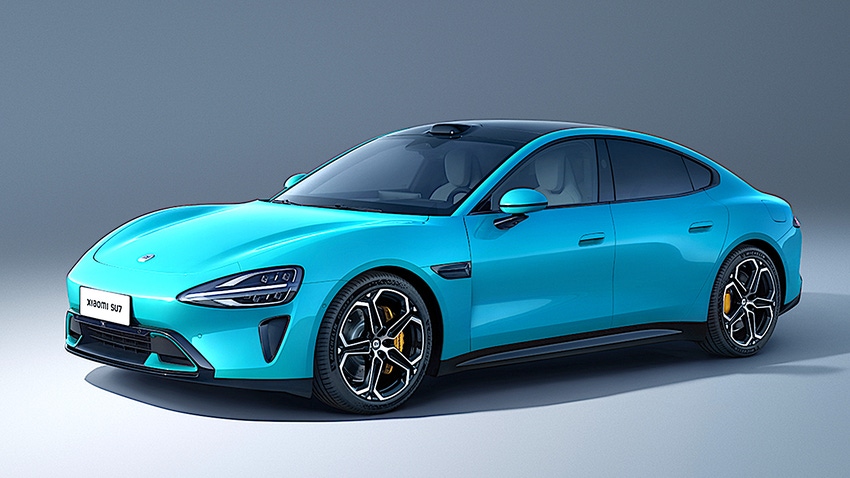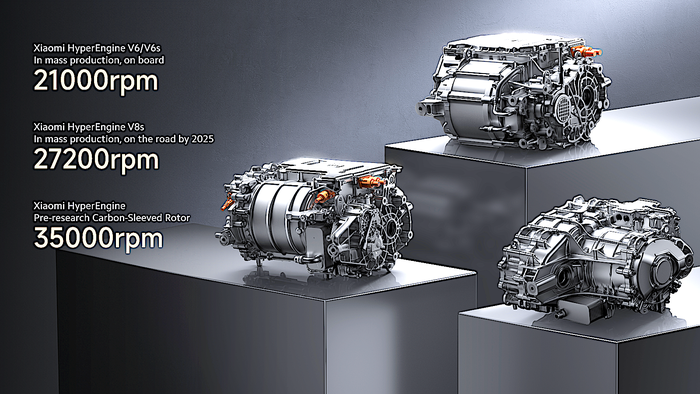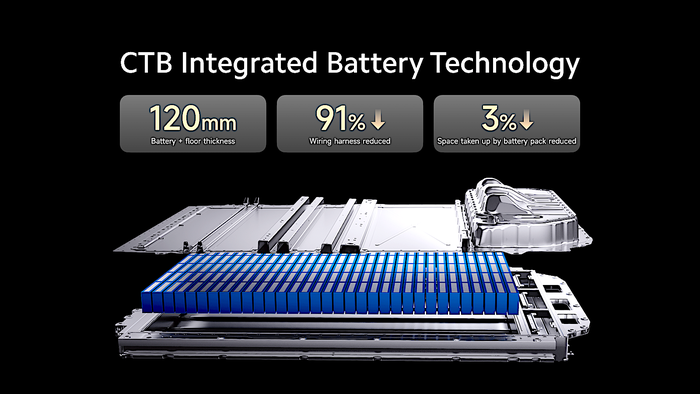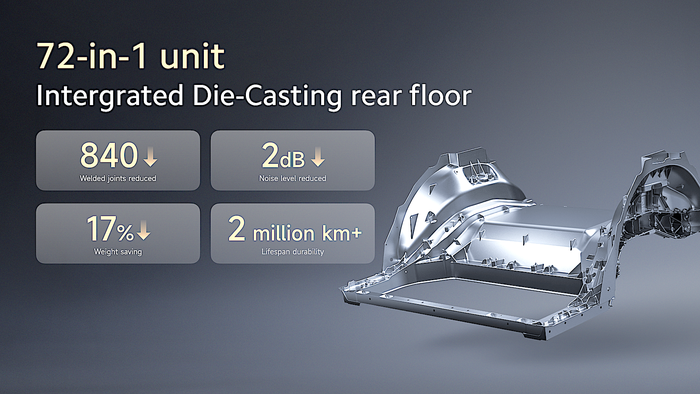Smartphone Maker Xiaomi Unveils an EV With Startling Performance Claims
Impressive technical claims make the SU7 sedan a fascinating development in the EV industry.

Upstart Chinese smartphone maker Xiaomi, which was founded only in 2010, has burst into the EV market with a new luxury sedan called the SU7.
Company founder, chairman, and CEO Lei Jun explained that he views the car as a crucial component of customers’ ecosystem, which also includes their homes. He declared the aim of becoming “one of the top five global automakers” within 15 or 20 years.
Xiaomi has spent more than the equivalent of $1.4 billion on a 3,400-strong research and development team to develop five core technologies. The company lists them as electric motors, batteries, large-scale die castings, autonomous driving, and smart cabin amenities.
Electric Motors
Xiaomi is claiming advances in electric motor development for the SU7, with a line of three motors that will power the car in the coming years. The company’s HyperEngine V6 spins at a maximum of 21,000 rpm and produces 295 horsepower and 295 lb.-ft. of torque and the HyperEngine V6s produces 369 hp and 369 lb.-ft. HyperEngine V8 motors planned for 2025 spin at 27,200 rpm and are rated at 578 hp and 468 lb.-ft.

XIAOMI
These motors benefit from features such as an advanced oil cooling system that the company says doubles the stator’s heat dissipation area, producing a temperature reduction of 68 degrees F. The stator’s silicon steel laminations feature a staggered, step-like design that the company says increases heat dissipation area by another 7 percent. The rotor, meanwhile, employs an ‘S’-shaped cooling circuit that boosts heat dissipation area by 50 percent to chill that part by 86 degrees F.
Batteries
Xiaomi says that its engineers have developed cell-to-body (CTB) batteries that improve battery integration efficiency to 77.8 percent, which it claims is world-leading. The battery height is trimmed 17mm, helping to minimize floor height when the batteries are packed underneath. The 150 kilowatt-hour battery pack provides a promised driving range of 745 miles.

XIAOMI
As with the e-motors, Xiaomi claims cooling advances for the battery pack, with a cooling area of 7.8 square meters, which it says is quadruple the industry average. The pack employs silica aerogel insulation to contain heat buildup inside the pack and it uses double-redundant thermal runaway monitors to maximize safety.
Large-Scale Castings
Xiaomi agrees with Elon Musk that large-scale castings are crucial to simplifying EV manufacturing for lower costs and the company has an impressive part to demonstrate its capability in this area. The company’s 9,100-ton casting die creates a rear chassis module that consolidates what would otherwise be 72 separate stamped pieces into a single cast part, reducing the car’s overall weight by 17 percent and cutting production hours by 45 percent.

XIAOMI
Autonomous Driving
Xiaomi equips the SU7 Max model with a lidar, eleven high-definition cameras, three millimeter-wave radars, and twelve ultrasonic radars that funnel information they gather to two Nvidia Orin processors that boast a combined computing power of 508 trillion operations per second.
The system includes Xiaomi’s Adaptive BEV Technology, whose algorithms analyze the car’s vision to a range of 250 meters on a grid whose granularity is as little 5 cm or as much as 20 cm. The car’s Road Mapping Foundational Model promises to navigate complex intersections without needing high-definition maps by learning from intersection scenarios and experienced drivers’ habits.
Finally, the Super-Res Occupancy Network Technology categorizes irregular obstacles by simulating all visible objects as continuous curved surfaces rather than blocks to achieve recognition accuracy of 10 cm. Xiaomi also claims the world’s first production-ready “end-to-end sensing and decision-making AI model” for automated parking that makes real-time observations and dynamic adjustments to deal with complications like elevators in parking facilities.
Smart Cabin
Inside, the SU7 features a 16.1-inch central display, a 56-inch head-up display, and a 7.1-inch instrument panel that can be rotated. Xiaomi says the in-car operating system starts less than 1.5 seconds after unlocking the doors. The system uses a Snapdragon 8295 processor to run all these displays.
The company hasn’t yet provided details on pricing or availability, but its bold technical claims ensure that the world will be watching Xiaomi’s next moves in the EV market.
About the Author(s)
You May Also Like





